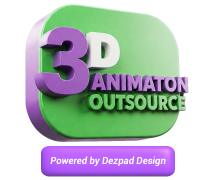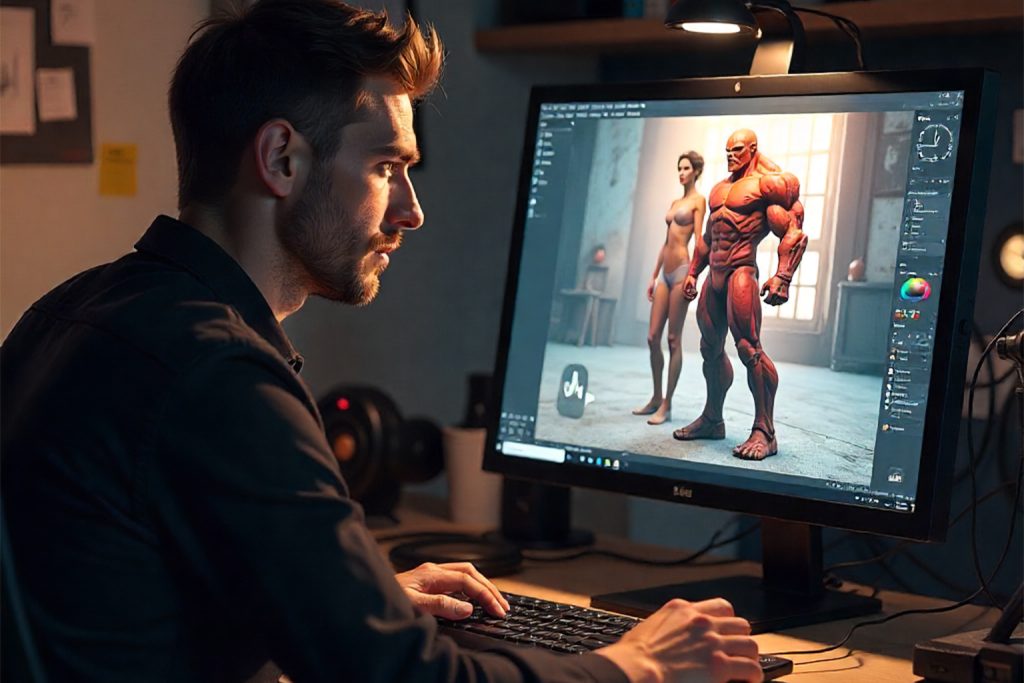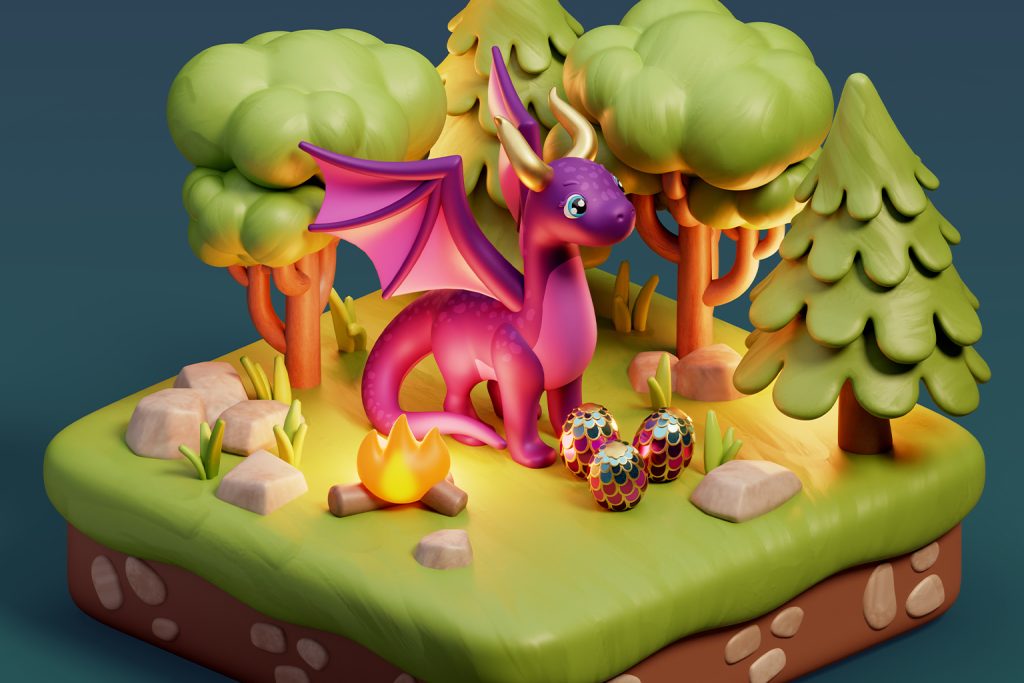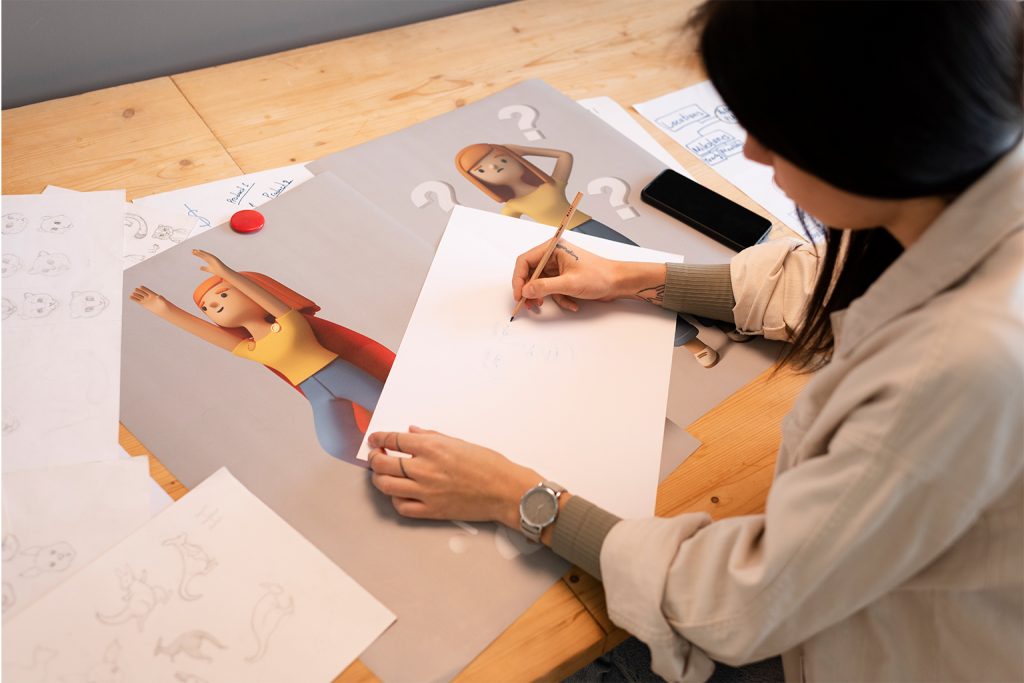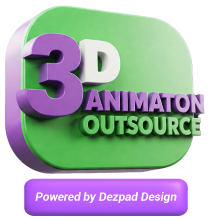3D character modeling is a fascinating combination of art and technology. It is the process of converting an idea or drawing into a lifelike or stylized digital character capable of moving, breathing, and interacting in virtual environments. From the animals in blockbuster films to the heroes of video games, 3D modeling serves as the foundation for transforming imagination into reality. For those new to the trade, knowing its fundamental concepts and stages is the first step toward creating characters who feel alive.
Understanding 3D Character Modeling
At its most fundamental, 3D modeling is the process of producing a three-dimensional digital representation of an item or character. A 3D model may be rotated, seen, and animated from any angle, as opposed to a flat 2D drawing. Polygonal modeling, which uses polygon meshes, is the industry standard in games and films. A model can be either high-poly, with great detail for close-up renders, or low-poly, intended for real-time applications such as gaming. While certain sectors utilize mathematical curves called NURBS for precision objects, character work usually chooses polygons for flexibility and animation.
This foundation is also important for specific fields, such as using a 3D anime character creator, where stylized proportions and exaggerated expressions necessitate precise balancing.
Why 3D over 2D?
The advantages of 3D character modeling go far beyond aesthetics. It provides realism that 2D designs rarely achieve, allowing light, shadow, and texture to interact dynamically with a character. Animations become smoother and efficient as artists no longer have to redraw each frame by hand. Instead, a rigged character may be positioned and moved precisely. Adjustments are also much simpler because proportions and textures may be adjusted without having to start over. Finally, a 3D model is a full digital item that may be adapted to numerous platforms.
For example, when a 3D character animation studio creates content, 3D models enable them to create numerous scenarios, moves, and perspectives without having to rework the entire character design.
From Ideation to Character Creation
A 3D character is created by a multi-step process that takes it from imagination to reality via technical and artistic elements. It starts with concept art, which includes sketches and reference boards that describe the character’s appearance, outfit, and personality. Once the concept is finalized, modeling can begin. Artists create the basic forms, then sculpt details like hair and muscles before refining the model into a high-poly version. High-poly characters are too heavy for real-time applications, and thus, retopology is used to generate a smoother, low-poly mesh.
Following modeling, the procedure proceeds to UV mapping, which flattens the model into a 2D structure for texturing. Baking adds features from the high-poly version to the optimized mesh, making it appear more detailed while maintaining performance. Texturing provides skin, textiles, and surface effects to characters, enhancing their depth and realism. Rigging then creates a digital skeleton, and skinning connects the mesh to this structure. Once these phases are completed, animation brings the character to life, letting it move, fight, and emote in realistic ways.
These stages are very important for styled characters such as anime character 3D models. From large eyes to flowing garments, elements must be expressive without breaking during animation.
The Tools that Shape Characters
The tool selection can make or break the modeling process. Autodesk Maya and Blender are popular in the business due to their extensive feature sets, but they are expensive and require a significant learning curve. ZBrush specializes in sculpting organic elements like skin and folds, whereas Blender is a powerful free choice with a thriving community. DAZ Studio makes it easier for newcomers by providing pre-made elements.
Aside from modeling tools, animators frequently rely on 3D character animation software to improve rigging and movement. These applications enable the creation of lifelike, dynamic animations, which are vital for storytelling in games and films.
Time, Cost, and Professional Options
A professional 3D character requires a significant amount of effort to create. Concept drawing can take up to twenty hours, sculpting and retopology can take more than fifty, and texturing, rigging, and animation take even longer. The entire process can take weeks, depending on the complexity. For tasks with tight deadlines or high-quality standards, hiring professionals is frequently the best option. Freelancers, in-house teams, and specialized studios all have advantages in terms of cost, communication, and scalability.
When seeking external assistance, collaborating with a 3D character animation studio provides access to pipelines and experience that streamline the creation of production-ready characters.
Bringing Digital Characters to Life
3D character modeling is more than just a technical procedure; it is an art form that brings creativity to life. It takes patience, an eye for design, and a technical understanding of how digital meshes work. Beginners can begin with free tools, basic lessons, and practice projects before progressing to professional-grade software. Over time, this combination of originality and craft enables painters to create characters capable of inhabiting fantasy, action, or realistic universes.
Whether you’re an aspiring hobbyist utilizing a 3D anime character creator, a professional animator using 3D character animation software, or a team working together in a 3D character animation studio, the process offers limitless creative opportunities. With effort, your imagined heroes and animals can transform into lively digital beings that attract audiences worldwide.
Final Thoughts
Whether you require assistance, professional support, or a full team to construct your anime character 3D model, our professionals are here to assist. Contact us to start the process of turning your imagination into a 3D character.
